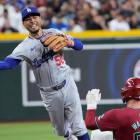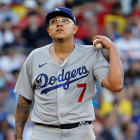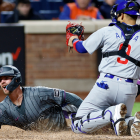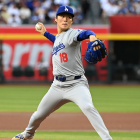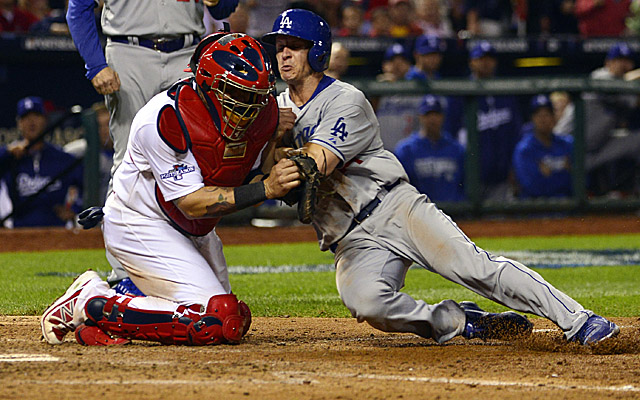
MORE: Cardinals manager and former catcher Matheny doesn't like rule
Back during the Winter Meetings, Major League Baseball announced its intention to enact new rules regarding collisions at home plate, but the proposal still needed to be approved by the players and umpires. Monday, MLB announced that the rule has been officially passed.
The new rule does not outright ban all collisions at home plate. Instead, it "will prohibit the most egregious collisions at home plate." So no Scott Cousins on Buster Posey crimes will be permitted, but garden variety collisions are still possible. Directly from the MLB press release:
- A runner attempting to score may not deviate from his direct pathway to the plate in order to initiate contact with the catcher (or other player covering home plate). If, in the judgment of the Umpire, a runner attempting to score initiates contact with the catcher (or other player covering home plate) in such a manner, the Umpire shall declare the runner out (even if the player covering home plate loses possession of the ball).
- Unless the catcher is in possession of the ball, the catcher cannot block the pathway of the runner as he is attempting to score. If, in the judgment of the Umpire, the catcher, without possession of the ball, blocks the pathway of the runner, the Umpire shall call or signal the runner safe.
Those seem like they should have been being enforced anyway, so the hope here is that even the most hardcore, old school fans realize this is a step in the right direction.
The new instant replay system will be available regarding potential violations of this rule, MLB has also announced. Here is the official wording from the rulebook on the new rule, which is Rule 7.13:
(1) A runner attempting to score may not deviate from his direct pathway to the plate in order to initiate contact with the catcher (or other player covering home plate). If, in the judgment of the Umpire, a runner attempting to score initiates contact with the catcher (or other player covering home plate) in such a manner, the Umpire shall declare the runner out (even if the player covering home plate loses possession of the ball). In such circumstances, the Umpire shall call the ball dead, and all other base runners shall return to the last base touched at the time of the collision.
Rule 7.13 Comment: The failure by the runner to make an effort to touch the plate, the runner’s lowering of the shoulder, or the runner’s pushing through with his hands, elbows or arms, would support a determination that the runner deviated from the pathway in order to initiate contact with the catcher in violation of Rule 7.13. If the runner slides into the plate in an appropriate manner, he shall not be adjudged to have violated Rule 7.13. A slide shall be deemed appropriate, in the case of a feet first slide, if the runner’s buttocks and legs should hit the ground before contact with the catcher. In the case of a head first slide, a runner shall be deemed to have slid appropriately if his body should hit the ground before contact with the catcher.
(2) Unless the catcher is in possession of the ball, the catcher cannot block the pathway of the runner as he is attempting to score. If, in the judgment of the Umpire, the catcher without possession of the ball blocks the pathway of the runner, the Umpire shall call or signal the runner safe. Notwithstanding the above, it shall not be considered a violation of this Rule 7.13 if the catcher blocks the pathway of the runner in order to field a throw, and the Umpire determines that the catcher could not have fielded the ball without blocking the pathway of the runner and that contact with the runner was unavoidable.















